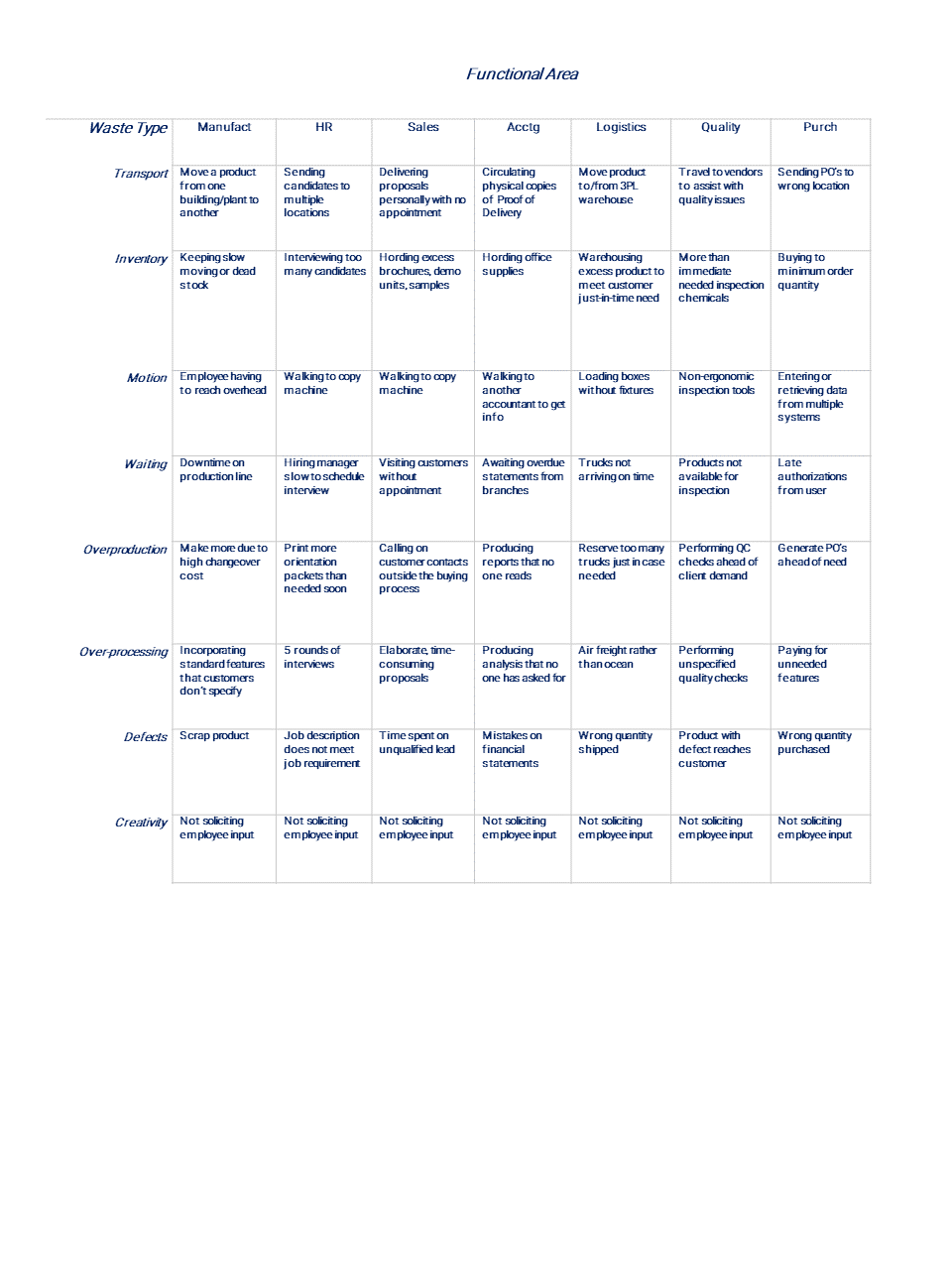
One of the principles of Lean Enterprise is finding and eliminating waste. Waste is any activity that is not Value-added. In this post, we'll define Value-added, define Waste, differentiate between classes and types of waste, and finally, provide examples across organizational functions to get you started on seeking out sources of waste that interfere with your ability to deliver a product or service which meets customer expectations and provides profits to your organization.
Value-added Activities
To be considered Value-added, an activity must meet three requirements:
A customer would willingly pay for it if he knew that it was included in the provision of the product or service
It must be done correctly the first time
It must change/transform the product or service in some way
The first two requirements may be obvious. To understand the third, here’s an example:
Copying and pasting a list of investment account balances from one spreadsheet to another does not change the information, hence, it’s not a value-added activity. Analyzing those numbers to make recommendations to your client to perhaps diversify her portfolio is value-added.
Waste Defined
Waste, therefore, is any action or activity that is not value-added. The goal of Lean is to eliminate any non-necessary waste and minimize the amount of necessary waste. Necessary waste??? Sometimes, there are factors beyond your control which cause waste. These could be due to regulatory requirements (information duplicated on several different forms), for example.
There are many articles which cover the types of waste, with examples in one particular area. Refer to the table, below, with examples of waste across several functions. This might be a great start for you to uncover sources of waste in your function.
How to Proceed
Did these examples look familiar to the situation in your organization? If so, unfortunately, you usually can’t just stop doing something wasteful. But once you’ve identified some likely culprits, you can charter a Lean Six Sigma project or a Rapid Improvement event to improve the process, finding better ways of doing it, resulting in better quality, improved safety, shorter cycle times, and greater productivity, all of which will contribute to higher profitability, along with many other benefits.
Examples of the 8 Types of Waste

